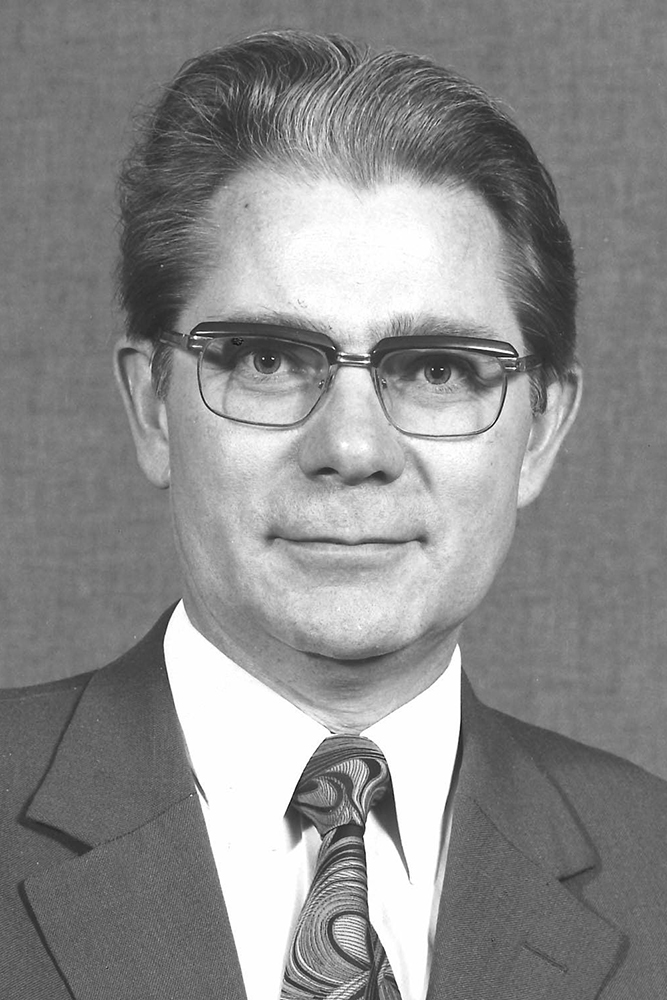Visionary, initiator and person On the death of Professor Klaus Pierick
I met Professor Pierick and his institute at the end of the 1980s. I was studying Civil Engineering at the time. The subjects “railway construction” and “railway traffic” were among the numerous lectures in the basic subject studies. They were compulsory subjects at that time and were examined together with road engineering in a written exam. While the visit to “railway construction” was still plausible for me as a prospective civil engineer, I, like most of my fellow students, was quite unfamiliar with “railway traffic”. Signals, the calculation of braking distances and timetables – yes, that appeared to many of us far off from real construction subjects such as statics and steel construction. And the computer exercises at Pierick’s Institute also dealt with such exotic subjects as line, vehicle deployment and personnel planning in transport companies.
The institute headed by Professor Pierick was large. In addition to the two floors in the high-rise building at Pockelsstraße 3, there were several branch offices and a separate department, “Securing Air Traffic”, which was headed by Professor Form. Professor Pierick’s department was staffed by scientists from a wide variety of backgrounds. They came from the fields of Electrical Engineering, Computer Science and Mathematics, among others. Civil engineers were in the minority there. The then Deutsche Bundesbahn (German Federal Railways), and after reunification also the Deutsche Reichsbahn (German State Railways), seconded staff with the opportunity to do their doctorates, who also contributed their expertise to teaching. Seen as a whole, the institute was a great melting pot of disciplines. Also for the students, who at that time did not primarily come from Civil Engineering, but predominantly from Computer Science and Electrical Engineering.
With the interdisciplinary orientation of his institute and its teaching, Professor Pierick – he was a bricklayer’s apprentice, construction worker and studied civil engineer – followed the idea of his predecessor Professor Lagershausen to unite emerging new technologies for the further development of the railway system with the classical disciplines under one roof. Whereas under Professor Lagershausen in the 1950s it was Communications Engineering, Professor Pierick recognised very early on the importance and potential of the emerging field of Computer Science. Not only for the railway system itself, but also for student education. We students should recognise the potential of computer technology and carry it out into the working world. The computer pools of our faculty go back to his commitment and his work as CA representative of the state of Lower Saxony. So here we come full circle to what – as described above – caused astonishment among some Civil Engineering students.
Using the new to advance the old, the tried and tested. Innovation in word and deed. This is what Professor Pierick stood for. In connection with the Hanover-Würzburg high-speed line, which was still in the planning stage at the time, he is said to have “threatened” the board of the German Federal Railways that if they – the railways – thought of putting up signals along the line, he would get out his saw at night and cut the signals down again. He focused on the new. Technology transfer was a matter of course for him, not a shell. He was active as a company founder. The ipw Ingenieurgesellschaft GmbH and the Braunschweig-based parts of Alstom Signal GmbH and WSP Infrastructure Engineering GmbH can be traced back to him and still enrich the local railway-specific business landscape today – albeit partly under different names.
I myself only had Professor Pierick as my supervisor for a good one and a half years, and in this role I perceived him very little. In the summer of 1996 he became emeritus professor and Professor Pachl became his successor.
I was much more involved with Prof. Pierick in the technical and legal investigation of the 1998 ICE accident in Eschede, Lower Saxony. For about four years we worked closely together as part of the team of experts of the public prosecutor’s office, took part in the meetings of the special commission, presented our case together in court, researched and reconstructed with cool engineering expertise. In the process, we repeatedly felt the suffering and shock that accompanied this accident. They were four emotionally very moving years for both of us. I am therefore grateful not only for the very collegial and appreciative collaboration, but also for having been able to get to know Professor Pierick from his very sensitive and human side during this special time.
Dr.-Ing. Gunnar Bosse, Senior Scientific Councillor at the Institute of Railway Systems Engineering and Traffic Safety

